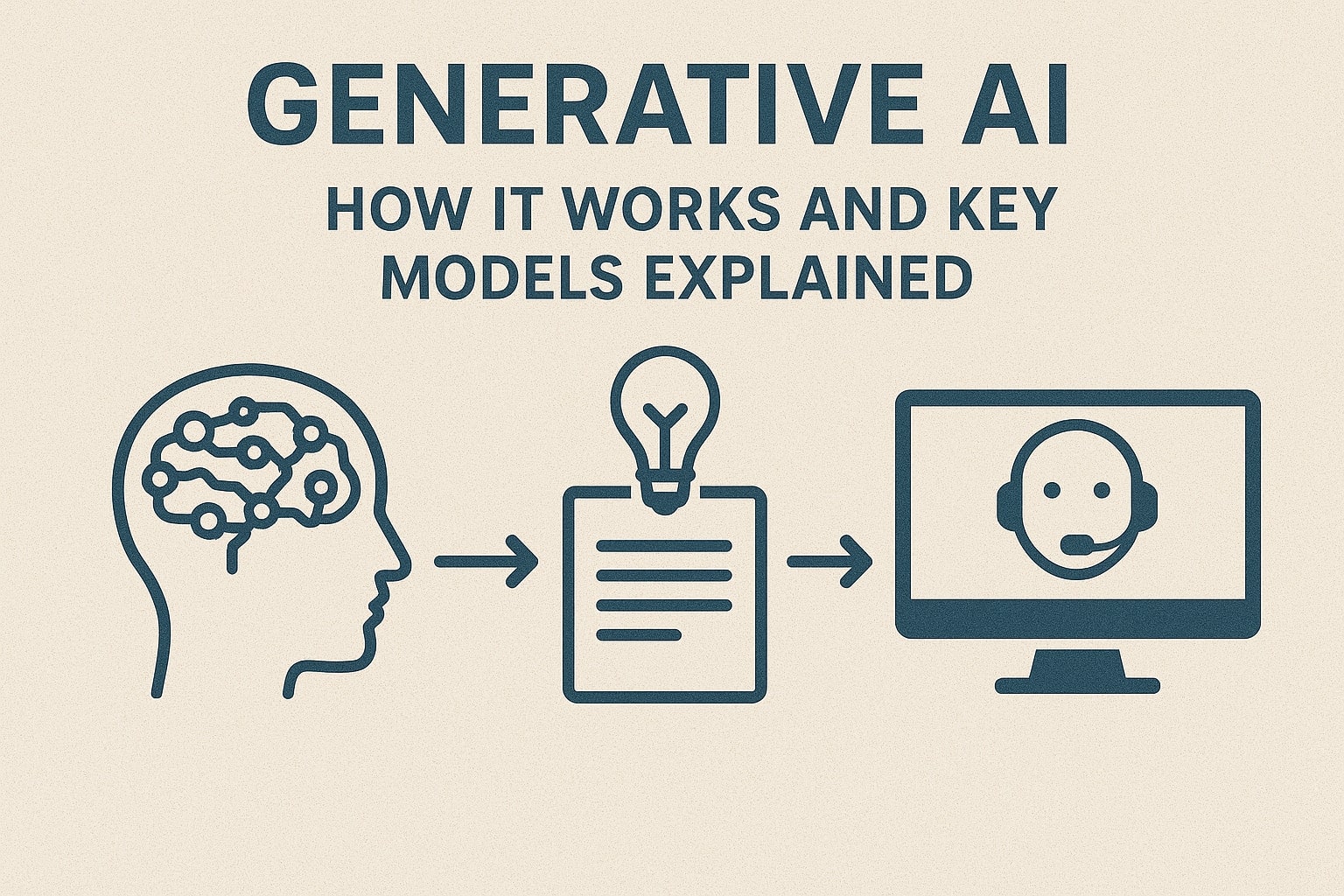AI content generation is transforming industries, from art to coding. Tools like DALL-E, ChatGPT, and Midjourney can create content from scratch. In this guide, we explain how AI-generated content works in simple terms.
What is Generative AI?
Generative AI is a type of artificial intelligence that creates new content such as text, images, audio, or video. It learns patterns from existing data and generates original outputs. Unlike traditional AI, which only analyzes data, generative AI can produce completely new material.

How AI Content Generation Works
Most generative AI uses a neural network called a Transformer. Here’s a simple breakdown:
- 1. Large Data Intake: The AI is trained on huge datasets, like text from the internet or millions of images.
- 2. Pattern Recognition: It learns grammar, writing style, facts, shapes, colors, and composition.
- 3. Content Generation: Using your prompt, the AI predicts the next word or pixel to build content.
- 4. Iterative Creation: It repeats this process many times to produce a coherent output.

Key Models Behind AI Generation
- Large Language Models (LLMs): GPT-4 and Gemini generate human-like text, translate languages, and write code. See OpenAI Research.
- Diffusion Models: DALL-E 3 and Midjourney create images by turning random noise into visuals that match your prompts. Learn more at DeepMind Research.

Why Prompts Matter for AI Output
The prompt is your instruction to the AI. Clear, detailed prompts produce better results, while vague prompts yield generic content. This skill is called prompt engineering.
The Importance of AI in Modern Industries
Understanding AI content generation helps you use it effectively. It is not magic; it is advanced pattern recognition and prediction. Knowing how it works allows you to maximize benefits and avoid mistakes.
Ready to create? Learn how to guide AI models with our Best Practices for Writing Prompts in 2025.
